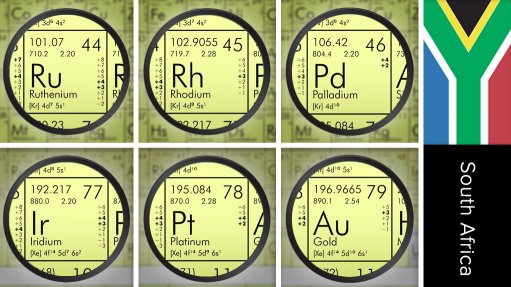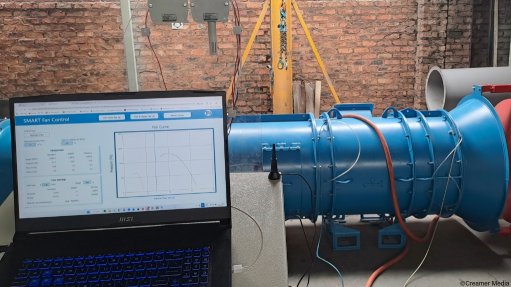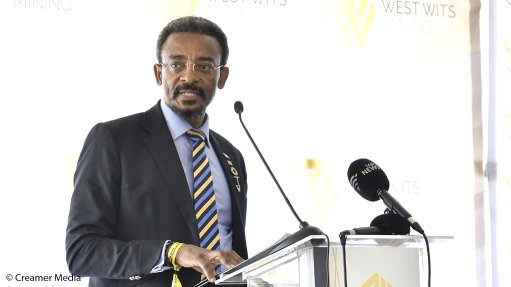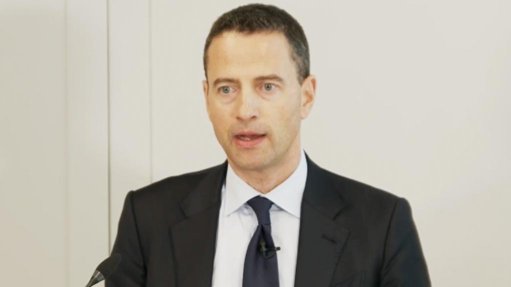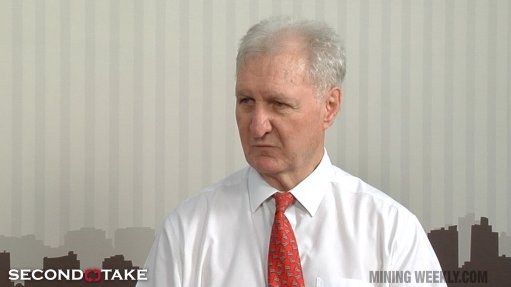Innovation drives mining efficiency, but also accessibility for women
Even though the mining industry has come a long way in providing more opportunities for women, women still only make up 12% of the industry’s workforce.
The adoption of new innovations and technologies can contribute to increasing the number of women working in the industry, says Women in Mining South Africa (Wimsa).
The organisation said during a webinar hosted as part of the Electra Mining Africa 2020 Connect virtual event, for which Creamer Media’s Engineering News & Mining Weekly is a partner, that as mining continues to modernise, it is opening up more opportunities and incentives for women to work in the industry.
The mining industry has been historically recognised as labour-intensive, with conventional mining methods characterised by physically demanding manual drilling processes, for example.
Diversified miner Anglo American business improvement head Petro du Pisani explained that the shift in thinking towards a modernised mine was driven by various factors, including the need to extend mine lives and to mine at increased depths, while health and safety dynamics continued to influence mining methods.
She added that the focus and introduction of technology would facilitate the improved representation of women, as the drive toward modernisation through technological innovations would not only make mining more attractive for women, but also make it easier for women to access jobs in the industry.
Council for Scientific and Industrial Research mining cluster executive manager Bongi Ntsoelengoe said technology had opened up more career opportunities in the mining industry, compared with ten years ago.
This while technology had also helped to transform the industry’s value chain to become more people-centred and more efficient.
She explained that an operator’s role had changed to performing diagnostics and analysis while sitting in a control centre, away from the rock face.
Ntsoelengoe said technology was not only changing the way activities were being done, but also the perceptions and biases in the industry.
“We see the introduction of drones to collect geological data, which breaks the stereotype of using manual collection tools and geological teams needing to be skilled in one technical discipline.
“Technology has helped to break the silos of technical disciplines that often makes up the mining value chain. The value chain is more integrated and offers much more decision support for operational managers, with data guiding decisions,” she stated.
Ntsoelengoe added that women could get involved at various levels within the mining industry, including in communication careers that enable data connected to designing systems for operational maintenance.
These digital skills were also not limited to the mining industry only, but were applicable in a range of industries.
However, she believes the mining industry lacks focused research centred around innovation to enable the increased participation of women in mining and that makes for more inclusive environments.
For example, some personal protective equipment, such as a self-rescue pack, were too bulky and heavy for women to carry around, she said, suggesting that the industry needed more innovation to help women do their work more efficiently and productively.
CHANGING BIAS
Even though the career path and opportunities in mining have become more appealing to women, there is still a high percentage (70%) of women that leave an engineering field because their competency is constantly being questioned and they often feel undervalued.
This shows the need for more inclusion initiatives for women in mining, said application development company Those Devs director Tebogo Marope, adding that, even though mining was not as male-dominated as before, female representation still remained among the lowest of all sectors, which was partly owing to prejudiced ideas of women.
“Physical strength and stamina is becoming less important than fine motor skills and analytical thinking, while innovation is also improving safety standards for women. However, we still need technology and innovation that helps to address the barriers that have caused gender segregation in the industry.”
Marope noted that, as much as technology was removing barriers to female participation, it was not enough.
For example, higher education in science, technology, engineering and math subjects, which was the entry point for the mining industry, was still not as accessible and inclusive for women.
The move to a more transformed, inclusive mining sector starts with more women being attracted to the career path at basic education level, she stated.
BETTER WORLD
Minerals Council South Africa modernisation and safety senior executive Sietse van der Woude, meanwhile, noted that building a clean and more socially just world required mineral resources.
Technologies in the Fourth Industrial Revolution require gold, copper, lithium and rare earths and the revolution could not proceed without electrifying and cabling up the world for high-speed Internet.
However, like innovation toward a modern world needs mining, mining needs innovation.
Van der Woude believes South Africa’s declining mining sector productivity, output and sales over the last decade could be solved by investing into more inclusive and effective innovation.
“With the right incentives, we have the capacity to make different decisions and do things differently. Innovation will change the requirement of jobs. As soon as we de-physicalise mining, it can drive gender equality. The transition to modern mining also creates new jobs in other industries, not just mining.
“A cleaner, more socially just world depends on mining, and, in turn, by building a more inclusive and productive sector, mining can attract the best talent and contribute even more to the economy and society,” he stated.
Anglo American early talent head Vanessa Naicker echoed this sentiment, saying that mining made the modern world tick, but needed to be done in a responsible manner so that future generations could also benefit.
“Innovation, automation and digitalisation are impacting all parts of the mining value chain, including technical and non-technical support elements, which creates interesting supply chain opportunities.
“With these opportunities opening up, the workforce needs to shift to more advanced skills, which opens up more avenues for women to contribute to the sector,” she explains.
Naicker noted that, as much as the industry had to promote female participation and employment, women also had a responsibility to educate themselves, to choose engineering subjects and skill themselves in such a way as to be valuable across multiple technical disciplines, by having the digital know-how that they require in a modern world.
She concluded that mining was purpose-driven and about being intentionally part of society. “To have that consciousness is what makes it exciting for women, because women are fundamentally conscious of their positioning in society; to put those qualities into an evolving sector, that is exciting.”
Article Enquiry
Email Article
Save Article
Feedback
To advertise email advertising@creamermedia.co.za or click here
Press Office
Announcements
What's On
Subscribe to improve your user experience...
Option 1 (equivalent of R125 a month):
Receive a weekly copy of Creamer Media's Engineering News & Mining Weekly magazine
(print copy for those in South Africa and e-magazine for those outside of South Africa)
Receive daily email newsletters
Access to full search results
Access archive of magazine back copies
Access to Projects in Progress
Access to ONE Research Report of your choice in PDF format
Option 2 (equivalent of R375 a month):
All benefits from Option 1
PLUS
Access to Creamer Media's Research Channel Africa for ALL Research Reports, in PDF format, on various industrial and mining sectors
including Electricity; Water; Energy Transition; Hydrogen; Roads, Rail and Ports; Coal; Gold; Platinum; Battery Metals; etc.
Already a subscriber?
Forgotten your password?
Receive weekly copy of Creamer Media's Engineering News & Mining Weekly magazine (print copy for those in South Africa and e-magazine for those outside of South Africa)
➕
Recieve daily email newsletters
➕
Access to full search results
➕
Access archive of magazine back copies
➕
Access to Projects in Progress
➕
Access to ONE Research Report of your choice in PDF format
RESEARCH CHANNEL AFRICA
R4500 (equivalent of R375 a month)
SUBSCRIBEAll benefits from Option 1
➕
Access to Creamer Media's Research Channel Africa for ALL Research Reports on various industrial and mining sectors, in PDF format, including on:
Electricity
➕
Water
➕
Energy Transition
➕
Hydrogen
➕
Roads, Rail and Ports
➕
Coal
➕
Gold
➕
Platinum
➕
Battery Metals
➕
etc.
Receive all benefits from Option 1 or Option 2 delivered to numerous people at your company
➕
Multiple User names and Passwords for simultaneous log-ins
➕
Intranet integration access to all in your organisation






